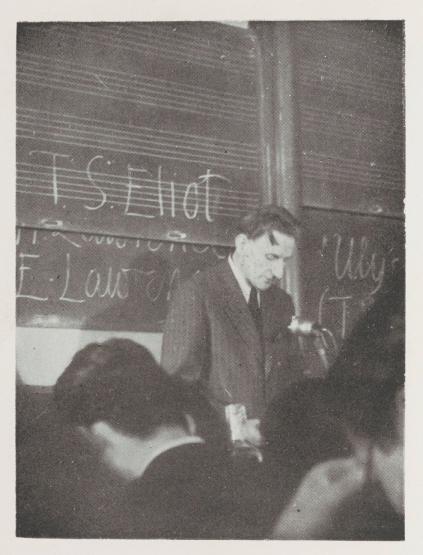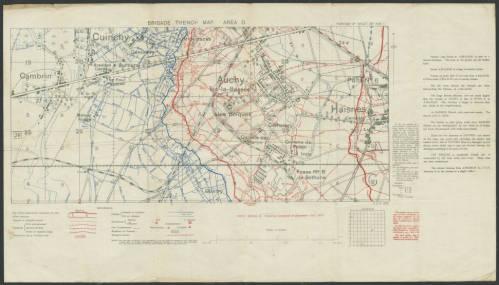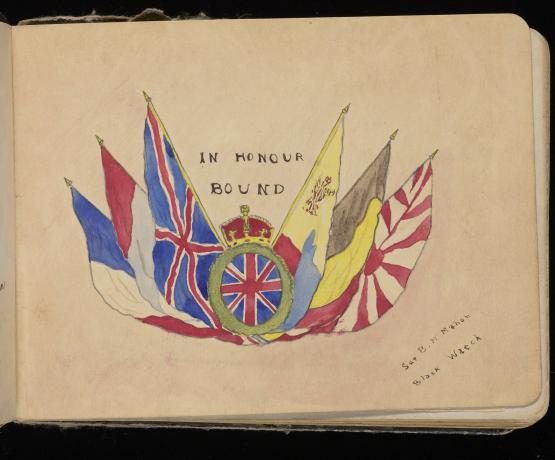About Edmund Blunden
Edmund Blunden (1896-1974) is well known for his literary contributions, including a wide array of genres in poetry, critique, biography, memoir, novel, nonfiction, and travel writing. His experience surviving front-line combat during World War I marks a significant period in his life and shift in his post-war writing.
Early Education and War Experience
Blunden’s daughter, Margi Blunden, describes the rural English setting of Yalding where her father grew up:
The community had inherited something that is largely lost to us now--a deep knowledge of country ways to do with animals and nature. It was a community rooted in a way of life which offered security and containment. Of course, the world never stands still, and Yalding, with its hop gardens and oast houses, was not impervious to the changing times, but, by and large, it was a place of tranquility and order. For Blunden it was his first love, and home in a very deep sense.
Blunden often returned to this tranquil scenery as a peaceful setting, evoking themes of nature in his poetry.
Blunden developed an appreciation for writing poetry in school. His education began at the prestigious boy's school Christ's Hospital in Kent, which boasts famous literary alumni including Charles Lamb and Samuel Taylor Coleridge. There Blunden began publishing poems at his own expense with 100 copies of 44 poems printed in Horsham, Sussex in 1914. Blunden would continue with a senior Classics scholarship to the University of Oxford in 1914, but a year later, he volunteered at 19 years old to join the Royal Sussex Regiment during World War I. Blunden survived continuous front-line action 1916-1918, where he witnessed the worst fighting at the Battle of the Somme and Ypres. Undertones of War (1928) is his most famous work of prose that reflects the great violence and tragedy of the war inflicted upon man and nature.
Signs of Blunden’s wartime experience also appear in the collection through maps and other official military publications, some of which contain annotations in Blunden’s hand.
The Woodhouse Hospital Autograph Book, 1915-1916 offers a moving glimpse into the lives of men in a wartime hospital, through their own writings, drawings, and doodles.
Post-War Writing
Blunden received the Military Cross for his work as an Intelligence and Field Works officer and returned to England in 1918 after being declared unfit for duty due to exposure to poisonous gas. Beyond this chemical impact, Blunden's poetry is marked with what we now understand as PTSD, signs of stress and anguish, as he navigated life after surviving the war.
After his return from the war, Blunden sought to represent the beauty and tranquility of the English countryside, an environment which provided a stark contrast to the dangerous environments he encountered during World War I. Beyond describing peaceful scenery, his poetry also explores relationships between humanity and the war, also touching on environmental concerns. Blunden spent a year after World War I cleaning up war damage in France. Margi Blunden invites readers to consider the function of landscape in his poetry, where his poem "Thiepval Wood" (1916) considers man's failure to feel emotion while trees in physical landscapes are destroyed at the hands of war.
The tired air groans as the heavies swing over, the river-hollows boom;
The shell-fountains leap from the swamps, and with wildfire and fume
The shoulder of the chalkdown convulses.
Then jabbering echoes stampede in the slatting wood,
Ember-black the gibbet trees like bones or thorns protrude
From the poisonous smoke - past all impulses.
To them these silvery dews can never again be dear,
Nor the blue javelin-flames of thunderous noons strike fear.
Blunden returned to Oxford in February 1919 and changed his scholarship from Classics to English. His war experience created a feeling of alienation from other students, and by June 2020 he ventured to London to publish essays and literary reviews in the British periodical, The Athenaeum. By the end of his life, he had produced more than 3,000 articles for periodicals. In March 1924, he began teaching English with a Professorship at the University of Tokyo. This distance from London provided a creative space where he began to write Undertones of War from his hotel room, almost completely from memory with no access to his notes.
Undertones of War begins with Blunden's reactions before heading off to France: "I was not anxious to go. An uncertain but unceasing disquiet had been upon me..." (5). The war between that unfolds is written in paired chapters with 13 in the Somme and the next 13 in Ypres. He returns home on a train to England feeling nothing but "simple joy" admiring the beautiful countryside, reflecting: "I might have known the war by this time, but I was still too young to know its depth of ironic cruelty" (200).
Memories of the war stuck with Blunden for the rest of his life; a year before his death in 1974, he wrote, "my experiences in the First World War have haunted me all my life and for many days I have, it seemed, lived in that world rather than this."
Resources
Edmund Blunden. Accessed March 27, 2023. https://edmundblunden.org.
Blunden, Edmund, Undertones of War, Oxford: Oxford University Press, 2015.
Blunden, Edmund, Selected Poems, Manchester, United Kingdom: Carcanet Press, 2018.
Blunden, Margi. "Landscape in Edmund Blunden's war poetry: Margi Blunden invites readers of her father's First World War poetry to empathize with the experience of a young country boy, thrown into the savage landscape of battle." The English Review 16, no. 1 (2005): 28+. Gale Literature Resource Center (accessed March 27, 2023). https://link-gale-com.proxy.library.ohio.edu/apps/doc/A136339233/LitRC?u=ashl12698&sid=bookmark-LitRC&xid=146b2285. [note: Ohio University login required for access]
Page created by Alexis Voisard, MA student in English, 2022-23 Rare Books Graduate Assistant


